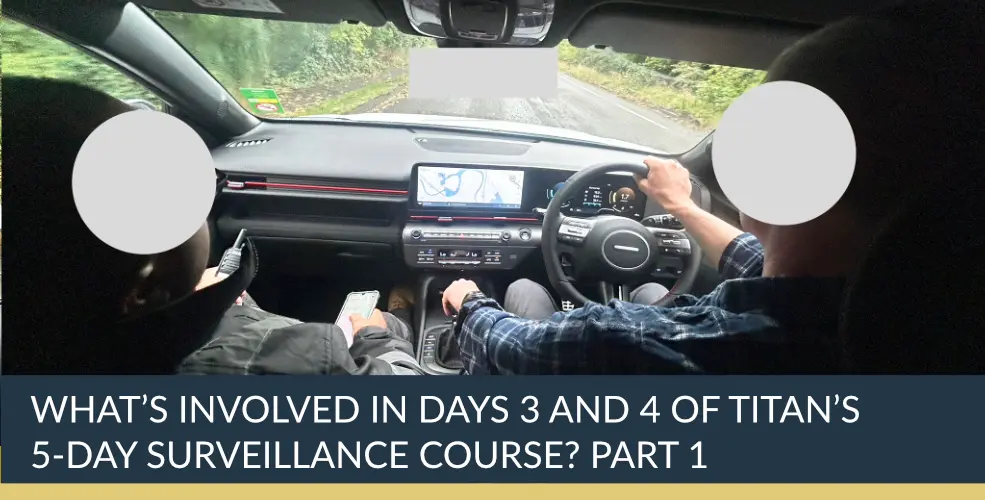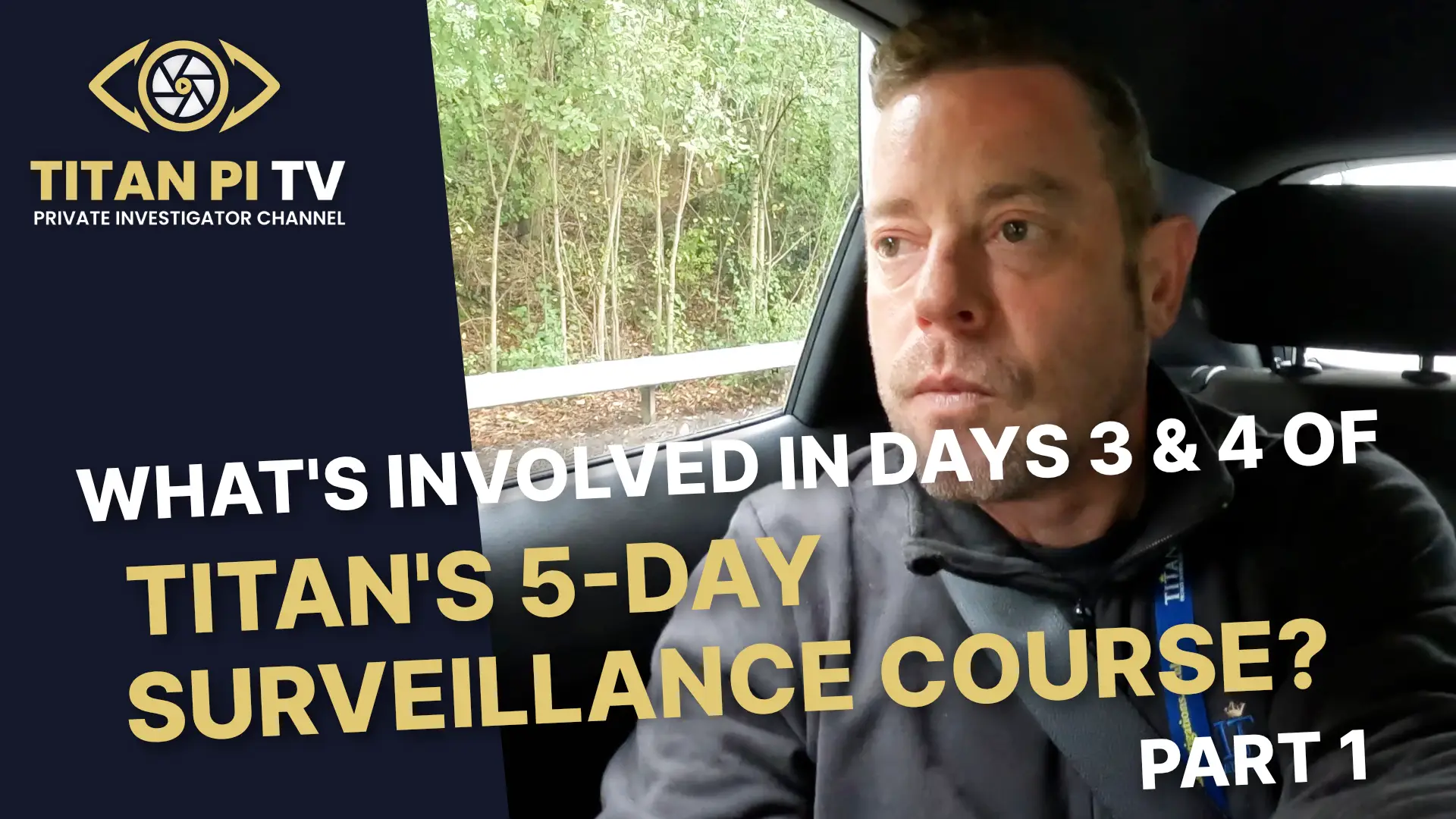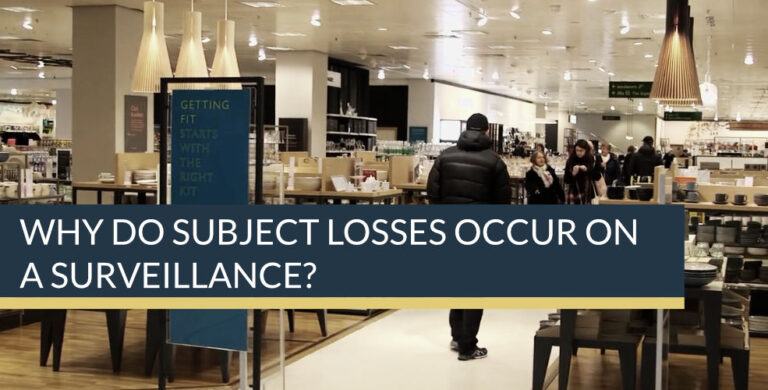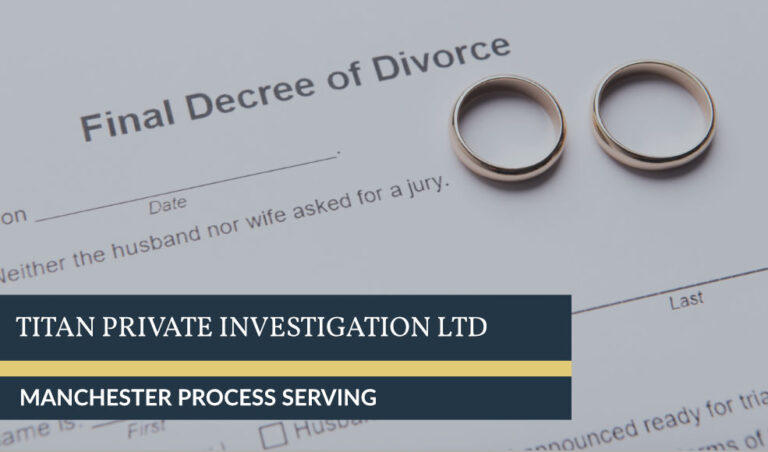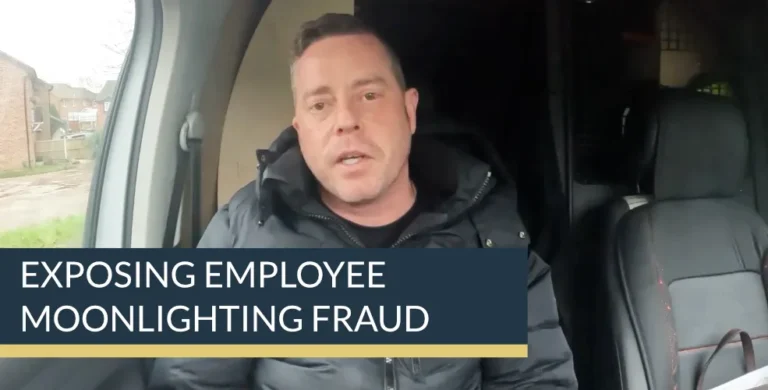What’s Involved in Days 3 and 4 of Titan’s 5‑Day Surveillance Course? Part 1
Titan’s Industry leading surveillance training course
Titan Private Investigation Ltd’s five-day covert surveillance course is a highly practical, industry-led programme culminating in an optional RQF Level 4 qualification—positioned just above A level. Whether or not you choose to undertake the assessment, the course content remains identical: everything is geared towards building the operational competence required to deploy safely, lawfully, and effectively in real-world surveillance environments.
By Days 3 and 4, the pace quickens noticeably. We move from the controlled discipline of foot surveillance and close-target observation into dynamic, higher-speed environments and more complex operational scenarios. This is where learners discover the realities of mobile surveillance on live roads, the precision and discipline demanded by motorway work, the unique challenges of multi-storey and crowded car parks, and the critical technical standards required to produce professional imagery. We also introduce anti-surveillance concepts and static observation posts, equipping trainees to recognise and defeat hostile tactics whilst preserving their own cover. In short: this phase turns competent observers into rounded operators capable of generating usable, defensible product under pressure.
What follows is an expanded guide to what you can expect across these two pivotal days of training, including learning outcomes, typical scenarios, quality standards, and the habits that set professionals apart.
Day 3: Introduction to Mobile Surveillance
After grounding the fundamentals on Days 1 and 2—footwork, observation discipline, communication, briefing/debriefing protocols, and initial report writing—Day 3 moves learners into vehicles. The emphasis shifts from deliberate, close-proximity observation to decision-making at speed, role discipline within a multi-vehicle convoy, and the calm execution of loss procedures when variables change.
Key areas covered include:
- Mobile surveillance tactics and vehicle roles
- Stop-and-plot procedures and sterile area management
- The HELP loss procedure
- Evening inputs: anti-surveillance and static observation posts (SOPs)
We operate four vehicles, each with three learners and an instructor—an approach that replicates real operational roles and ensures immediate feedback. Expect a demanding, hands-on day of approximately 11 hours, followed by structured homework focused on client-ready reporting.
Vehicle Roles and Team Discipline
Mobile surveillance demands clarity of role and trust in the team. On Day 3, trainees learn how each vehicle’s responsibilities interlock to maintain uninterrupted visual coverage:
- Eyeball: Holds visual contact with the subject (Target Vehicle/Target Person) and sets the pace for the convoy. The eyeball must balance proximity to maintain sight with discretion to avoid compromise.
- Backup/Secondary: Manages gaps, monitors junctions/turn-offs, and prepares to assume eyeball duties seamlessly.
- Outer/Perimeter: Floats strategically, anticipating potential routes and managing alternative angles or cover.
- Control/Comms: Ensures accurate, concise information flow across the team, including updates to the Controller or Case Manager if operating with an external control room.
Trainees learn how to rotate smoothly between these roles without confusion or chatter. Decision-making is reduced to a series of rehearsed, standardised actions: clear, short transmissions; agreed terminology; and radio discipline that maintains situational awareness for everyone involved.
Stop-and-Plot and Sterile Areas
“Stop and plot” is introduced as a cornerstone tactic: identifying safe locations where the subject must enter or exit, creating predictable choke points, and orchestrating coverage so that one of our team is positioned—covertly—to secure the necessary imagery or manage a handover. Sterile area management teaches learners to shape the environment to their advantage without alerting the subject. For example:
- Selecting a cafe or forecourt stop that forces the subject to walk past a pre-positioned operator
- Choosing parking locations that offer lines of sight without drawing attention
- Avoiding patterns and behaviours that can be read as hostile surveillance indicators
These skills are reinforced later during evening anti-surveillance training, where trainees learn to recognise how their own actions might be detected—and how to counter the tactics used by subject-aware individuals conducting checks or “clean runs.”
Loss Procedures: The HELP Mnemonic
Loss happens—even to seasoned teams working diligently. What matters is how you manage it. We instil a simple, repeatable loss framework called HELP:
- Honesty: Report facts as they are, without varnish. Ambiguity and ego destroy teams; honesty restores cohesion and allows quick recovery.
- Early call: Do not wait. Flag change and potential loss immediately so the team can reposition in time.
- Location: Provide precise coordinates—junction numbers, road names, notable landmarks, or What3words/map references—so assets can be redeployed intelligently.
- Procedure: Follow the agreed loss plan. Under pressure, improvisation tends to cause duplication, confusion, and further loss.
The HELP structure is practised repeatedly until it becomes instinctive under pressure.
Evening Session: Anti-Surveillance and Static Observation Posts
Even the best mobile teams may be undone by subjects trained in anti-surveillance. We teach common anti-surveillance behaviours—frequent U-turns, non-linear routing, public transport hops, unnecessary car park loops, excessive mirror checks—and how to avoid giving away your presence. This is coupled with training in static observation posts:
- Selecting an SOP location with the right angles of view and escape routes
- Managing time on target without creating pattern-of-life anomalies that could alert staff or neighbours
- Concealing vehicles and equipment from passers-by and CCTV sight lines
- Documenting observations and maintaining the chain of custody for any imagery captured
By the end of Day 3, trainees understand both sides of the observation equation: how to maintain disciplined coverage on the move and how to think like a subject trying to shed surveillance.
Day 4: Motorways, Car Parks, and Imagery Standards
Day 4 elevates both the speed and the stakes. Mornings are dedicated to motorway tactics and the precise communication standards required at higher speeds. We also drill the unique challenges posed by car parks—especially multi-storey locations with multiple entry/exit points, narrow lanes, and tight, short-signal opportunities for imagery. Above all, the day underscores the gold standard of surveillance output: imagery that stands up to client scrutiny, legal standards, and potential court disclosure.
Key learning areas:
- Motorway tactics and glossary
- Car park procedures (including multi-storey operations)
- Imagery: standards, kit, best practice, and admissibility
Why Imagery Is King
There is a hard truth in professional surveillance work: no matter how disciplined your coverage, if you cannot produce usable product, the operation has failed. As we put it bluntly on course:
“You can be the best surveillance team in the world. However, if you haven’t got any product or anything to prove what’s happened, you’re the shittest team in the world.”
Accordingly, our imagery module focuses on producing court-ready, client-ready outputs:
- Correct time and date stamping with reliable metadata
- Hardware selection for stills and video that remains covert but produces professional clarity
- Composition that proves identity, time, and place—rather than casual images lacking context
- Avoiding any frame content that reveals the interior of a surveillance vehicle or operational methods
- Managing chain of custody and digital hygiene (file naming, storage, audit trail)
We also cover how to shoot from constrained positions—through windows, at range, or across crowds—without telegraphing your presence or sacrificing quality. It is technical, precise, and relentlessly practical.
Motorway Tactics and Communication
Motorways require an elevated level of radio discipline and mental mapping. We teach:
- Junction-based language and references as a standard shorthand
- The yo‑yo convoy technique for sustained eyeball coverage
- Controlled handovers that rotate the eyeball without exposing any single vehicle
- Speed management: understanding that while subjects in commercial or trading environments often remain below 60 mph, the convoy must legally and safely manoeuvre at 70–75 mph to maintain cover and execute handovers
- Anticipatory driving that avoids sudden moves, overt signs of interest, or bunching behaviour that creates patterns
The yo‑yo technique is rehearsed until teams can execute it smoothly and predictably. The current eyeball vehicle may deliberately fall back to the fourth position, while the convoy cycles the next vehicle to the front, ensuring fresh eyes and preventing fatigue. This reduces pattern visibility and maintains operational discretion.
Car Parks: Complex, Crowded, Multi-Exit
Car parks are some of the most challenging ground to manage, especially multi-storey structures with poor sight lines and multiple exits. Our approach includes:
- Pre-entry planning: mapping entrances/exits, levels, sight lines, and likely movement pathways
- Level coverage: allocating vehicles and foot operators to zones to prevent complete loss during rapid moves
- Payment barriers and choke points: exploiting natural pauses in a subject’s movement for identification and imagery
- Vertical movement protocols: tracking lifts/stairs while maintaining cover on vehicle levels
- Evading CCTV focus: being aware of camera placements to avoid patterns without obstructing operational objectives
It is here that composure under pressure and pre-briefed role allocation pay dividends. Learners discover how a few seconds’ indecision near a ramp or barrier may result in loss, whereas disciplined positioning wins opportunities for strong imagery and positive identification.
Motorcycle Module and Trackers: Integrating Technical and Tactical Layers
A skilled motorcycle operator changes the shape of an operation. We run a motorcycle module alongside the five-day course, giving trainee drivers and riders a chance to integrate. Motorcycles can:
- Maintain visual contact in dense traffic where cars cannot
- Execute rapid re-positioning for handovers or cover
- Penetrate car parks and urban environments more flexibly
- Operate at a distance with reduced profile
We pair this capability with a structured briefing on tracking devices. Trackers are not a substitute for visual surveillance, but they are a powerful element of a layered approach. On Day 4, trainees are introduced to:
- Legal and ethical considerations around deployment
- Safe and covert installation methods
- Operational limitations: signal loss, environment-related latency, update intervals
- How to treat a tracker as a safety net and cueing tool for re-acquisition, not a crutch
This prepares learners for the final exercise, where trackers are often deployed under instruction as part of a comprehensive operational plan.
Practical Scenario: Bringing It All Together
To translate teaching into operational confidence, we create real-world scenarios. In one recent exercise:
- The subject’s start point was a Starbucks, allowing us to brief roles and pre-position assets.
- One foot unit handled close control; another located the subject vehicle.
- The vehicle was identified behind a BP garage. When conditions were safe and covert, a tracker was deployed.
- With the tracker in place, the team had a technical safety net—allowing temporary losses to be recovered and assets to be tasked efficiently for visual re-acquisition.
- The subject then went mobile, committing northbound to the M1 at Junction 25, enabling motorway handovers, convoy discipline, and motorway-specific comms to be tested in a live environment.
These staged yet realistic exercises force teams to apply their training in real time. The lessons are immediate, practical, and memorable—exactly what operators need before stepping into live client work.
Imagery and Client Reporting: Turning Observation into Evidence
Imagery is only as valuable as its integration into a coherent, defensible report. We insist on standards that meet professional expectations and potential evidential thresholds:
- Use devices capable of reliable time/date stamping and intact metadata. Body-worn solutions or configured handhelds are preferred where appropriate.
- Maintain professionalism in composition: no casual selfies, no frames revealing vehicle interiors, no cropping that removes essential context.
- Link imagery to observations chronologically, establishing a clear narrative that demonstrates identity, time, place, and continuity.
- Respect chain of custody: preserve original files, maintain naming conventions, and document any processing steps taken for disclosure.
To embed these habits, trainees complete daily homework assignments. Each evening, they prepare a concise client report based on stills and footage captured during the day. Over time, this builds the instinct to think like an investigator whose work must stand up under scrutiny from a client, an opposing legal team, or a court.
Key elements of a strong client-ready report include:
- Executive summary: a succinct overview of the operational day, objectives, and outcomes
- Method and coverage: who was deployed, where, and with what roles
- Chronology: a timestamped sequence of movements and observations, cross-referenced to imagery
- Findings: what was established, including identifications and behavioural notes
- Recommendations: next steps, risk notes, or additional tasking that may yield further evidence
This structure keeps the product clear, defensible, and actionable.
Professional Habits and Common Pitfalls
Across Days 3 and 4, we emphasise professional habits that prevent common errors:
- Pre-brief rigor: roles, routes, contingencies, and HELP rehearsed aloud before wheels turn
- Radio brevity: short, clear transmissions; one message per transmission; no “thinking out loud”
- Situational awareness: maintaining a mental map of assets, subject, and potential routes
- Pattern avoidance: rotating roles, varying positions, and avoiding overt clustering
- Evidence mindset: always asking, “What will the client or the court need to see?”
Common pitfalls we correct include:
- Over-fixation by the eyeball vehicle leading to compromise
- Hesitation on slip roads and in car parks
- Over-talking on the radio, causing missed information
- Poor shot composition that fails to prove identity or location
- Neglecting chain of custody and metadata integrity
Through repetition and immediate instructor feedback, these pitfalls become learning opportunities rather than operational liabilities.
Quick Checklist for Trainees
- Memorise and practise the HELP loss procedure until it is automatic.
- Carry reliable stills/video kit with accurate time and date functionality; verify settings at the start of each day.
- Master motorway glossary and junction/marker references before conducting motorway operations.
- Plan stop-and-plot sterile areas for predictable coverage during pick-ups and exits.
- Understand the motorcycle role and integrate it smoothly within the convoy.
- Treat trackers as a layered tool for resilience, not as a substitute for visual contact.
- Prepare a concise client report every day, linking imagery to observations in a clear, chronological structure.
- Maintain professional composition standards: protect methods, conceal interiors, preserve context.
- Keep comms disciplined: short, precise, and useful.
What to Expect from Days 3 and 4
These days are deliberately intense. Expect:
- Long hours, with significant time behind the wheel and on the radio
- Rapid decision-making in live traffic environments
- Tight coordination between multiple vehicles and, where applicable, a motorcycle unit
- High expectations around imagery standards and report-writing discipline
- Immediate, actionable feedback from experienced instructors who have worked live cases
The purpose of this pressure is not to create stress for its own sake; it is to inoculate learners against the realities of live surveillance, where moments of decision are brief, consequences are real, and outcomes hinge on preparation and professionalism.
Ultimately, Days 3 and 4 are the bridge between theory and practice. They separate hobbyists from professionals—not by bravado, but by process: plan carefully, execute calmly, capture defensible product, and document it to a standard that serves clients and stands up in court.
Final Word: Product Is King—Professionalism Is the Foundation
Surveillance is a craft grounded in preparation, discipline, and teamwork. The message we deliver repeatedly is simple: be professional, get the imagery, stick to the plan, and use technical tools intelligently to protect your operation. If you act professionally and deliver a robust product, you create value for your client and credibility for yourself.
Part 2 of this series will look ahead to Day 5 and the final exercise—where everything comes together in a realistic, end‑to‑end operation that tests planning, execution, technical deployment, imagery, and reporting under time pressure.
If you’re considering stepping into live surveillance work—or you want to raise your current standard—we’d be delighted to talk. Titan’s instructors are seasoned practitioners with operational backgrounds across corporate, legal, and sensitive investigations. Our goal is simple: to equip you with the skills, mindset, and standards to do the job right.
To enquire about upcoming course dates, pricing, and the optional RQF Level 4 assessment, please contact Titan Private Investigation Ltd or visit our training pages. We welcome new entrants and experienced professionals looking to sharpen their edge.
About Titan Private Investigation Ltd
Titan Private Investigation Ltd is a leading provider of corporate and private investigation services in the UK. Based in Derby, the company serves clients nationwide, offering a full range of investigative solutions including surveillance, fraud investigation, digital forensics, and more. We are a private investigation agency with a reputation for professionalism, discretion, and delivering results. Titan is the trusted partner of choice for businesses seeking to protect their interests and ensure compliance.
London Surveillance Operative Training – Call the Titan Investigations London Office 020 39046622
Birmingham Surveillance Operative Training – Call the Titan Investigations Birmingham Office 0121 7162442
Cambridge Surveillance Operative Training – Call the Titan Investigations Cambridge Office 01223 662022
Derby Surveillance Operative Training – Call the Titan Investigations Derby (Head Office) 01332 504256
Leeds Surveillance Operative Training – Call the Titan Investigations Leeds Office 0113 4574066
Leicester Surveillance Operative Training – Call the Titan Investigations Leicester Office 0116 2436520
Nottingham Surveillance Operative Training – Call the Titan Investigations Nottingham Office 0115 9646950
Manchester Surveillance Operative Training – Call the Titan Investigations Manchester Office 0161 3023008
Sheffield Surveillance Operative Training – Call the Titan Investigations Sheffield Office 0114 3499400
Truro Surveillance Operative Training – Call the Titan Investigations Truro Office 01872 888706
Alternatively, you can contact us directly using our fully confidential contact form at enquiries@titaninvestigations.co.uk or chat directly using our Live Chat facility, and one of our UK Private Investigators will get right back to you.

